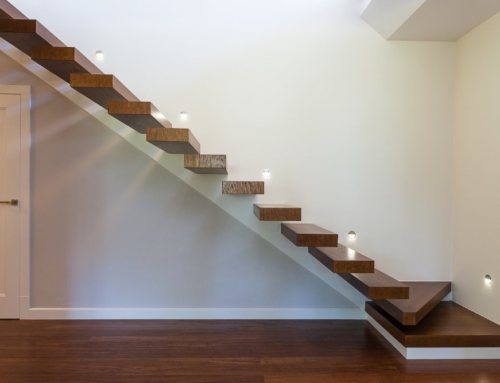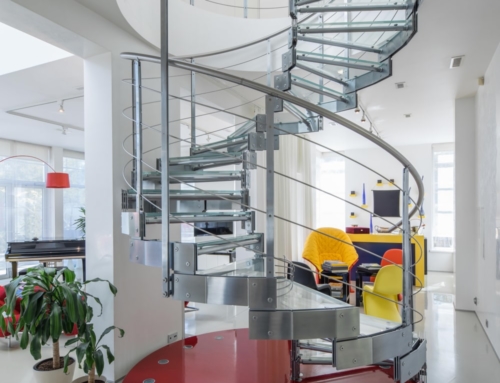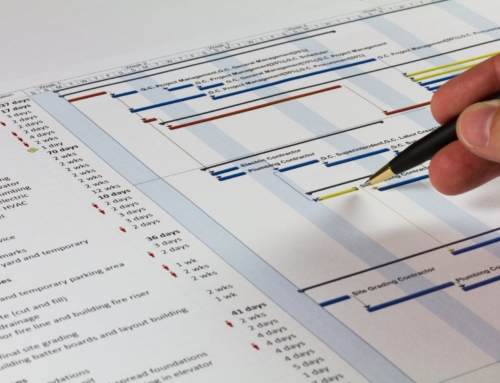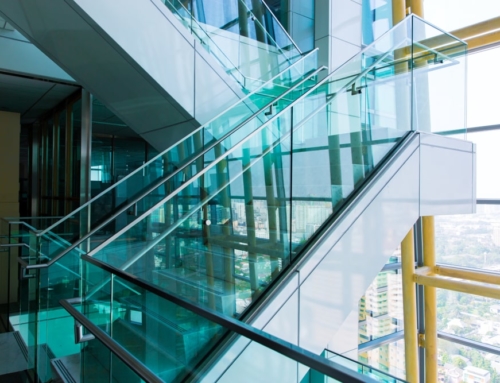When designing new staircases, many people immediately think of traditional straight stairs, but there are lots of alternative stair designs to consider. This includes helical staircases, selected for both modern installations and traditional properties.
Here’s everything you need to know about helical staircase designs, often chosen as the centrepiece of interior design projects.

What is a helical staircase?
Helical staircases have a curved structure, leading the user to another floor via a circular rotation. These unique staircases are full of character, found everywhere from open plan homes and modern offices to public spaces and design studios.
The design of helical staircases is similar to that of a spiral staircase but without a central spine for the treads to wind around. The stairs curve in a smooth arc, often forming a continuous oval or C-shape, depending on the design chosen. Both styles create a stunning focal point without being too imposing on a space.
Why choose helical stairs?
If you’re planning a new staircase installation, helical stairs make a great addition to the home. This style of stairs is a real statement piece, so they’re chosen for linking floors and creating grand entrances that’ll impress any visitors to your property.
As well as aesthetical benefits, helical stairs can be highly practical too, saving space where it’s limited, so you could also consider them for specialist projects such as loft conversions as they’ll fit in easily with existing landings.
How to design helical staircases
The best way to plan the ideal helical design is to work with a specialist staircase designer. They’ll guide you through everything you need to know, from building regulations and different style stairs to the materials you may want to use. They’ll also make sure helical stairs are the best option for the available space, ensuring they’re fit for purpose.
The choices are incredibly versatile, including timber treads, metal staircases and bespoke designs, often found in designer homes as a beautiful surprise feature. You can even combine materials for the ultimate custom-built design.
Other considerations when building new stairs
There are many considerations when designing a staircase, including the look and feel you want to create, the space you have available and how to ensure stairs blend in seamlessly with your property.
When creating suitable stairs, you’ll want to think about who’ll be using them (and whether the design causes accessibility issues) and building regulation limitations (e.g. sizing, headroom and space between treads).
Curved helical staircases are often easier to climb than tighter spiral stairs, but they also take up more space, so you’ll also need to consider the floor and wall area around the structure.
Start your new staircase project
Would you like to see some more examples of how helical staircases could work in your home? Arrange a free consultation with our experts at DDC London. We offer staircase design and installation services across the South East of England, including Ealing, Epping and Hampstead.
To get started, contact us now.




